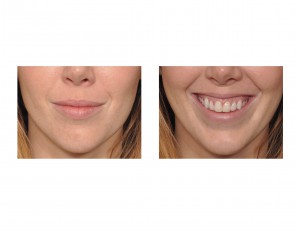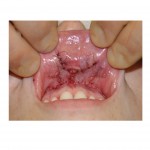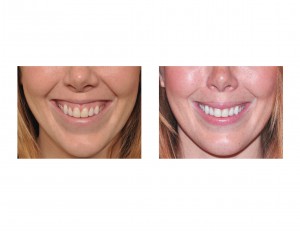Background: The gummy smile is when excessive soft tissue (attached gingiva) is shown during upper lip animation. Ideally, when more than 1mm of gingival shows it is deemed aesthetically excessive although it probably is only bothersome to most people when it is more than 2 or 3mms. The cause of almost all gummy smiles is vertical maxillary excess, the maxilla is too vertically long for the amount of lip tissue.
In many gummy smile patients, the maxilla is not long enough to justify a LeFort I or maxillary impaction. Only when the amount of gingival show exceeds more than about 7mms can bone shortening be worth the effort. This leaves a large number of patients to seek out a potential soft tissue or upper lip lengthening approach.
Lengthening the upper lip is a lot more difficult to achieve than shortening it. The upper lip is a suspended structure but the effects of smiling and scar contracture work against any lengthening effort. This requires that all factors that contribute to the upper lip anatomy must be managed during any upper lip lengthening effort.



The best result for soft tissue correction of the gummy smile addresses three parts of the upper lip anatomy. The internal mucosa of the upper lip is increased with a V-Y flap. The central upper lip elevator muscle is transected to partially deanimate upper lip movement. The depth of the upper lip vestibule is shortened to help resist upward scar contracture.
Case Highlights:
1) Soft tissue correction of the gummy smile can be done when the maxilla is not excessively long as demonstrated by lip competence at rest. The gummy smile is apparent with smiling.
2) Upper lip lengthening can be accomplished by a V-Y mucosal advancement, levator muscle transection and vestibular shortening.
3) Some relapse should be expected after surgery which stabilizes by six weeks after surgery.
Dr. Barry Eppley
Indianapolis, Indiana


